Sani60ies
Sani60ies
The project Sani60ies, funded by the Austrian Research Promotion Agency (FFG), demonstrates minimally invasive retrofitting of buildings from the 1950s and 1960s.
The basic concept is the subsequent thermal activation of the buildings by means of a facade-integrated heat distribution system, which is installed between the existing wall and the insulation material. The building can thus be supplied with low-temperature heat. This circumstance offers the best conditions for the efficient use of heat pumps. At the same time, the best conditions are created for a sustainable and efficient cooling option.
The decarbonization of heating and hot water production in existing urban residential buildings should - for social and economic reasons - be carried out with minimal intervention in the housing stock and should also - for reasons of efficiency in the operation of heat pumps - enable a reduction in the heating flow temperatures. The Sani60ies project meets both of these challenges: a system of façade-integrated component activation is being developed, which is applied between the former exterior of the existing wall and the newly applied full thermal insulation in the course of thermal refurbishment of existing buildings without interfering with the apartments.
With this highly innovative system, a base load of the winter heat supply is managed at low flow temperatures, while at the same time utilizing potentials for energy flexibility. The coupled measure of thermal refurbishment and new external wall heating relieves the existing radiators and also enables a significant reduction of the flow temperature for them. Beyond the effect of climate-friendly heating supply, the system offers the quality of a climate-neutral cooling effect in summer.
This concept is being tested on several properties. The first demonstration object is located in the center of Vienna and is in operation since 2023.The other demonstration buildings will follow in 2025. A dissertation written by DI Constanze Rzihacek entitled ‘Performance analysis of a retrofitted thermal façade activation in three residential buildings in Vienna’ is planned as part of the project, which will address the following questions:
- How does the façade activation installed in the three demo buildings perform in the heating and cooling mode?
- How efficient are the heat pumps supplying the thermal activation?
- What effects on the interior can be derived from the indoor measurement data (temperature, humidity)?
- Is the IPSEpro façade activation model developed at the institute a valid represenation if the installed systems?
The content of the thesis includes the evaluation of the measurement data from the three demo objects in Microsoft Excel to create energy balances for the heat source/sink, the heat/cold generators (= reversible heat pumps), the buffers, the distribution system and the overall system. The efficiency of the reversible heat pumps is assessed by calculating the SPF/SEER or COP/EER at specific operating points. Furthermore, an assessment of the effect on the interior is carried out by analysing the room logger data through comparisons with periods in which the façade activation was not in operation under similar weather conditions, as well as simulations of the hydraulic system with process simulation tools (IPSEpro, IDA ICE). Finally, the validity of the IPSEpro model for façade activation is to be verified using measurement data via the validation tool included in IPSEpro.
For further informations regarding the project Sani60ies don´t hesitate to contact DI Dr. Magdalena Wolf or DI Constanze Rzihacek.
The project will be implemented together with the Institute for Building Research & Innovation (IBRI), VASKO+PARTNER INGENIEURE Ziviltechniker für Bauwesen und Verfahrenstechnik GesmbH and Sozialbau AG until June 2026. The project is funded by the Austrian Research Promotion Agency (FFG).
Project status: ongoing
-
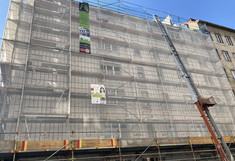
Façade activation on demo object 1 -
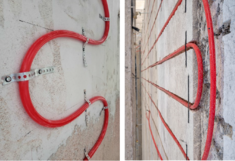
Methods for attaching the pipes to the outside of the existing wall -
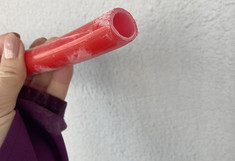
Pipe material used in Demo object 1 -
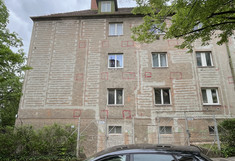
Façade activation on demo object 3 -
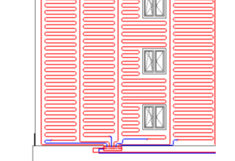
Planning the pipework with only one high point to avoid air accumulation -

Heat flow analyses using Therm with different installation distances and temperature conditions (existing wall: Durisol) -
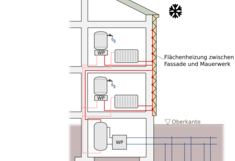
Façade-integrated component activation - heating in winter -
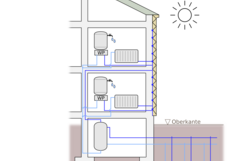
Façade-integrated component activation - cooling in summer
